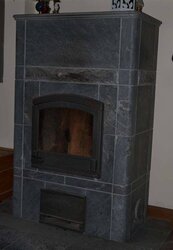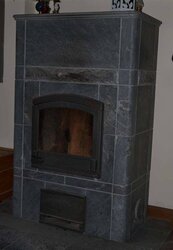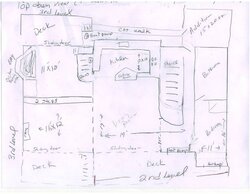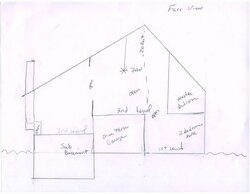Several people wanted an update on my situation
In summary, I have a TU1000 Tuliviki soap stone stove - It cost 10k, plus installation. My house is on open area house with 3 different levels and over 55 windows and skylights. I cannot install a stove on the lowest area as it has no outside walls. The stove is on the mid level. The majority of my time is spent on the highest level, which has the most square footage. From the lowest level to the highest ceiling is 30 feet - again open.
I finally spoke with a tuliviki installer and here was his thoughts - The stoves are designed to heat the areas on which they are installed. It was installed on the wrong level. (With the foundation that was required, the prior owner could not have installed it on the main level. He suggested I burn the stove hotter. You cannot continually burn a fire is these stoves. I burned a hotter stove during the past cold snap. On the nights it was 12 degrees or below, the stove could not heat the house warmer than 62 degrees, when it's cloudy it cannot heat the house warmer than 62 degrees. if the sun is out, then I heat the house to 73 degrees. On cloudy days, I have to run electric base board heat $$$$$$$
I also found out that the stove had "extensions" added to create more height. The installer said adding additional stove won't solve the problem since I'm trying to heat an area that's above the stove.
Ultimately, the stoves are meant to radiate the heat to the area where the stove is. I think the prior owner thought that the heat would rise to the level above (there is no wall between the middle and upper levels, just a 4 foot wall.
Anyway, I've come to the conclusion that I will be selling the stove once I get over the fact that's it's a beautiful stove. Still, the bottom line is I need a higher BPU or more wall space to install another wood stove.
Thanks for all the comments.
In summary, I have a TU1000 Tuliviki soap stone stove - It cost 10k, plus installation. My house is on open area house with 3 different levels and over 55 windows and skylights. I cannot install a stove on the lowest area as it has no outside walls. The stove is on the mid level. The majority of my time is spent on the highest level, which has the most square footage. From the lowest level to the highest ceiling is 30 feet - again open.
I finally spoke with a tuliviki installer and here was his thoughts - The stoves are designed to heat the areas on which they are installed. It was installed on the wrong level. (With the foundation that was required, the prior owner could not have installed it on the main level. He suggested I burn the stove hotter. You cannot continually burn a fire is these stoves. I burned a hotter stove during the past cold snap. On the nights it was 12 degrees or below, the stove could not heat the house warmer than 62 degrees, when it's cloudy it cannot heat the house warmer than 62 degrees. if the sun is out, then I heat the house to 73 degrees. On cloudy days, I have to run electric base board heat $$$$$$$
I also found out that the stove had "extensions" added to create more height. The installer said adding additional stove won't solve the problem since I'm trying to heat an area that's above the stove.
Ultimately, the stoves are meant to radiate the heat to the area where the stove is. I think the prior owner thought that the heat would rise to the level above (there is no wall between the middle and upper levels, just a 4 foot wall.
Anyway, I've come to the conclusion that I will be selling the stove once I get over the fact that's it's a beautiful stove. Still, the bottom line is I need a higher BPU or more wall space to install another wood stove.
Thanks for all the comments.





